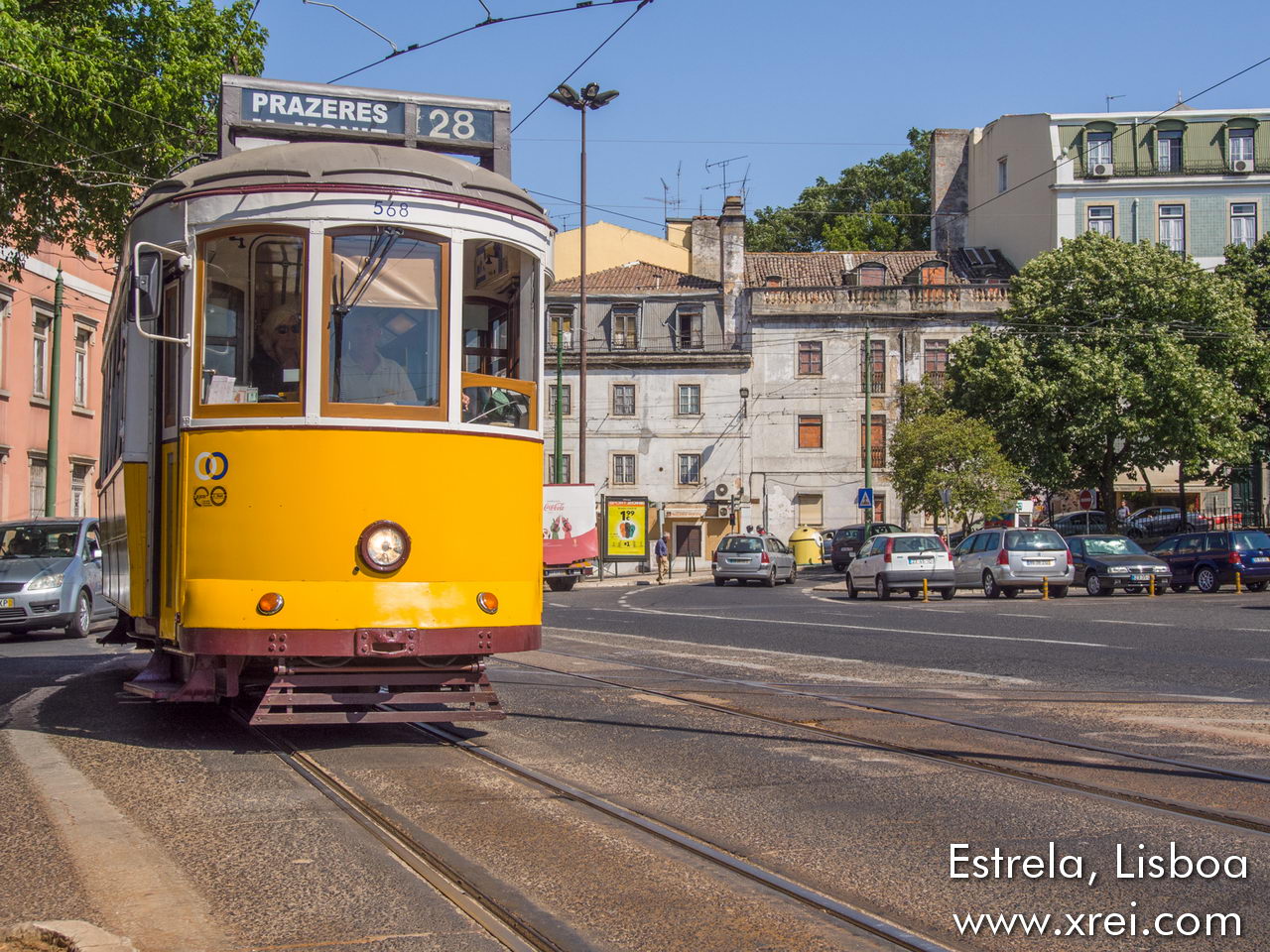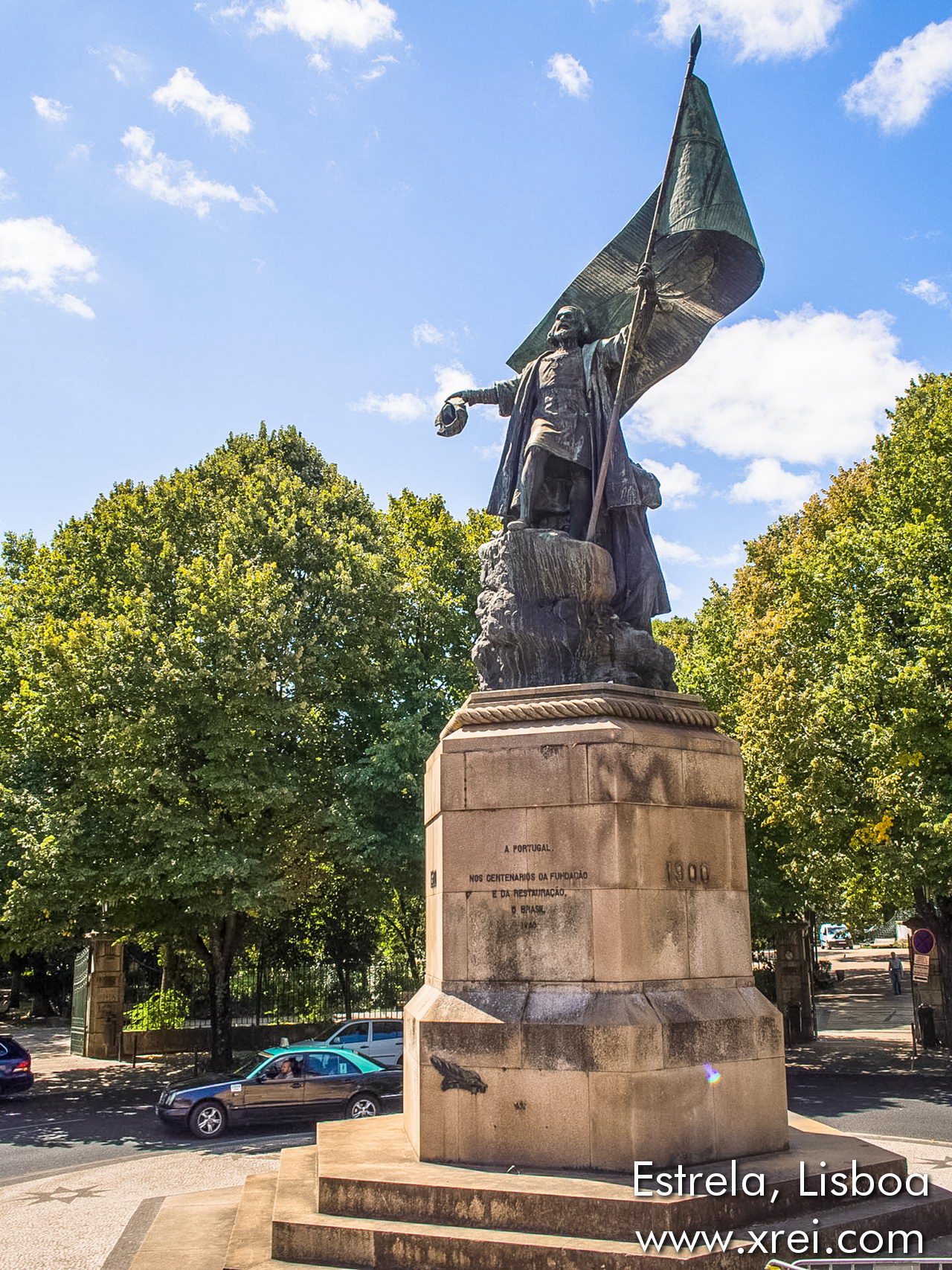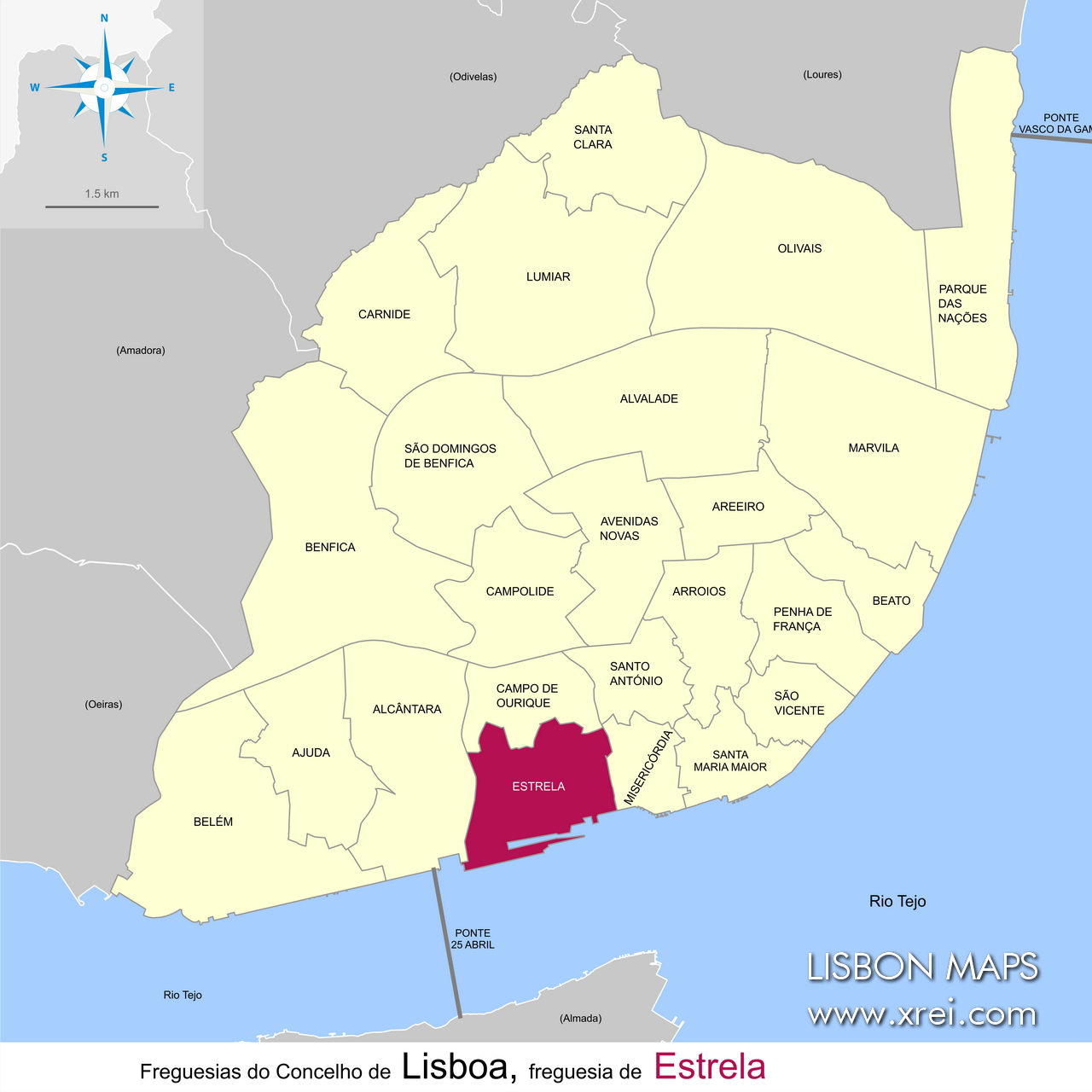
Bairro da Estrela, a traditional residential neighborhood in Lisbon centrally located in the traditional center of Lisbon, on a hill near the river, between the neighborhoods of Lapa, São Bento, Rato and Amoreiras
In this article, you will get to know about...
Estrela, the chic district of Lisbon
The Estrela neighborhood one of the most noble, quiet and safe residential neighborhoods in the city of Lisbon, built in the 18th and 19th centuries, mostly with two-story buildings, many inhabited by a single family, the Bairro da Estrela is very popular for Portuguese and foreign families to live. In the neighborhood of Estrela we find the headquarters of the Social Democratic Party, the official residence of the Prime Minister of Portugal and the Lisbon district with the largest number of embassies installed in the old palaces of neoclassical architecture perfectly preserved. In the Bairro da Estrela we find companies, family homes, design stores and antique shops.
The neighborhood of Estrela owes its name to the five streets that start from Praça da Estrela, a central square that exists between the Basilica da Estrela and the Jardim da Estrela. The main street is Calçada da Estrela.
The Estrela neighborhood includes two typical Lisbon neighborhoods: the Santos neighborhood and the Madragoa neighborhood. Estrela is a neighborhood where there are many historic buildings of great heritage value , noble, quiet, traditional, modern and ideal for living or to establish and develop a business in safety and comfort.
The parish of Estrela encompasses The neighborhood of Estrela | The neighborhood of [Lapa] (: lapa) | The neighborhood of [Santos-O-Velho] (: Santos-O-Velho) | The neighborhood of [Madragoa] (: madragoa) | The neighborhood of [São Bento] (: sao-bento).
The Estrela neighborhood is managed by the Parish Council of Estrela.
Attractions to visit in the Estrela neighborhood
1. Basilica da Estrela is the first public church in the world devoted to the cult of the Sacred Heart of Jesus, located in Praça da Estrela, tram stop 28. The Basilica da Estrela was ordered built by Queen Dona Maria I to pay for the promise of having an heir to the throne, with the birth of Dom José. The Basilica da Estrela was designed in Baroque and Neoclassical styles by the architect Mateus Vicente, the same architect of the National Palace of Queluz, and by Reinaldo Manuel, inaugurated on November 15, 1789. The Basilica da Estrela has the following highlights:
- Main facade – highlight for the two bell towers with clocks and the set of four statues representing Faith, Devotion, Gratitude and Freedom;
- Viewpoint of the Basilica;
- Nativity scene with over 500 pieces by Machado de Castro;
- Set of statuary of the basilica by Machado de Castro, namely to represent the Virgin Mary, São José and Espírito Santo;
- Tomb of Queen Dona Maria I;
- Altarpiece altarpiece by Pompeo Batoni (1708-1787);
- “The Last Supper”: paintings to represent “The Last Supper” and “The Incredulity of São Tomé” by Pompeo Battoni;
- “The Supper of Emmaus and São Paulo”: paintings to represent “The Supper of Emmaus and São Paulo”, “Education of the Virgin by Santa Ana,” A Sagrada Família ”,“ Immaculate Conception and the Martyrdom of São Sebastião ”by Pedro Alexandrino de Carvalho (1729/1819);
- Organs by António Machado e Cerveira
2. Jardim da Estrela: located in the center of the Estrela neighborhood, it is one of the oldest and most frequented public gardens in the city of Lisbon, a garden built in the 19th century based on the English gardens of the time, with very old trees, it is a space with five entrance gates, located in Praça da Estrela. The Jardim da Estrela is officially designated as Jardim Guerra Junqueiro, opened in 1856 under the name “O Passeio da Estrela”. The Jardim da Estrela is a popular place for tourists, Portuguese families, and students of all ages who make study visits there in order to study the Romantic style in which the garden was built. In addition, this garden is an excellent place to stroll, do sports, rest or picnics in the center of Lisbon. The main highlights of Jardim da Estrela are the Iron bandstand; the Playground; the lake; peacocks and ducks and fish; the kiosks; and the library.
3. Museu do Oriente: is a museum dedicated to the dissemination of the historical and commercial connection between Portugal and the Orient, located on Avenida Brasília. The Museu do Oriente was opened in 2008 in the Pedro Álvares Cabral Building, built during the 1940s with a project by the architect João Simões and renovated by the architects Carrilho da Graça and Rui Francisco during the decade 2000. The Museu do Oriente distributes more than 13,000 pieces from the collection to various exhibitions, namely the Exhibition “Portuguese Presence in Asia”; and the Exhibition “Gods of Asia”.
In addition to these permanent exhibitions, the main highlights of the Museu do Oriente include a terrace where you can see the Tagus River and Serra da Arrábida, a panoramic restaurant, a specialized Documentation Center in the East and a Center Meetings.
4. Palácio das Necessidades is the building where the Ministry of Foreign Affairs of Portugal, is located in Largo das Necessidades. The Palácio das Necessidades, commonly known as the “Pink Palace”, was the only residence of the Royal House that resisted the 1755 Earthquake, having been built between 1743 and 1750 under oriented by architect Caetano Tomás de Sousa and remodeled in the 19th century by Reinaldo Manuel dos Santos. The Palácio das Necessidades performed several functions, namely residence of foreign princes who visited the country, royal residence, headquarters of the Royal Academy of Sciences and Ministry of Foreign Affairs. The main highlights are:
- Tapada das Necessidades is a garden with approximately ten hectares protected by a wall, located in Largo das Necessidades. The Tapada das Necessidades was inaugurated in 1745 with a project by the architect Caetano Tomás de Sousa. This place hosts several activities, including the Out Jazz with free concerts for Lisbonians and tourists. The main attractions are the Chafariz com Obelisco; the Jardim dos Cactos, considered one of the oldest cactus gardens in Europe; the Circular Greenhouse, built at the behest of King Dom Pedro V; Casa do Regalo inaugurated in 1889 with the objective of being the painting studio of Queen Dona Amélia. The Casa do Regalo performed several functions, namely place of detention of children with tuberculosis, administrative services of the Portuguese Army, atelier of several Portuguese artists, Office of the former President of the Republic Jorge Sampaio and Estação Florestal Nacional ; The Lago Duque de Lafões; the Lago das Palmeiras; the Lago das Estrelícias; and “As Virtudes”, represented in a statuary set.
- Queen’s Library: a library with the purpose of integrating the Queen Literature collection Dona Amélia and the Oceanography collection of Rei Dom Carlos;
- Chapel of Nossa Senhora das Necessidades: highlighting the statues representing Nossa Senhora das Necessidades, São Paulo, São Pedro, São Felipe Neri and São Francisco de Sales;
- Ambassadors Room: with a special reference to the stucco on the ceiling and the blue silks on the walls;
- Sala das Damas: also known as Sala Etrusca, it has the representations of the “Triumph of Love”, the “Amores de Marte”, and the “Judgment of Paris” in ceiling with main attractions.
5. Jardim Lisboa Antiga: this is the garden where the Convent of Francesinhas formerly existed, located at Rua das Francesinhas. The Jardim Lisboa Antiga is also known as Jardim das Francesinhas. The attractions are the Lake; the Sculpture “A Família” by Leopoldo de Almeida; and the Kiosk known for crepes.
6. Jardim de Elisa Baptista de Sousa Pedroso is a garden dedicated to the pianist Elisa Pedroso, located at Rua da Imprensa à Estrela. The Jardim de Elisa Baptista de Sousa Pedroso, also known as Jardim Salazar or Jardim Imprensa, is located at the back of the Assembly of the Republic and stands out for the sculpture “As Portuguese Women Grateful to Salazar” by Leopoldo de Almeida.
7. Jardim Olavo Bilac: is a small garden located in front of the Palácio das Necessidades Church. Jardim Olavo Bilac, also known as Jardim do Largo das Necessidades, was named in honor of the Brazilian poet Olavo Bilac. The Jardim Olavo Bilac was built by the King Dom João V, with a project by the architect Caetano Tomás de Sousa, highlighting the View over Alcântara, Rio Tejo and 25 de Abril Bridge; and the Chafariz das Necessidades.
8. Kindergarten of Praça da Armada is a small playground with facilities for children to play safely, located in Praça da Armada.
Main streets and squares in the neighborhood of Estrela
Calçada da Estrela is the most important street in the Estrela neighborhood, with a connection between Praça da Estrela and Praça Poiais de São Bento. The street name was baptized by Calçada da Estrela to honor Nossa Senhora da Estrela. Calçada da Estrela is quite busy due to the various attractions, namely the Tram 28, the several restaurants and bars.
Praça da Estrela is possibly the busiest street in the Bairro da Estrela due to the presence of the Basilica da Estrela and the Jardim da Estrela, with a connection between Calçada da Estrela and Avenida Infante Santo.
Avenida infante Santo is one of the most important roads along the coast of Lisbon, as it is accessible to the districts of Santos, Estrela and Campo de Ourique, making the connection between Praça da Estrela and Avenida Brasilia. The Avenida Infante Santo is a place full of life, multicultural due to the proximity of the Campo de Ourique neighborhood, the presence of nightlife establishments and the tile panels by several Portuguese artists, namely Maria Keil, Júlio Pomar or Carlos Botelho. Avenida Infante Santo is thus designated to honor Dom Pedro (1402-1443), known as Infante Santo, who died during the Tangier disaster.
Rua São Domingos à Lapa: it is the most important street in the Lapa neighborhood, with a connection between Travessa da Conceição à lapa and Rua das Janelas Verdes. The Rua São Domingos à Lapa has numerous attractions, namely the Tram 25, which runs between Praça da Figueira and Bairro da Lapa, the Fundação Aga Khan Portugal, the Palácio Porto Covo, the Portuguese Writers Association, the Former Ceramics Factory Constância and the Palácio Ramalhete.
Educational establishments in Estrela neighborhood
- Sacred Heart of Jesus Social Center
- Pedro Nunes Secondary School
- João de Deus School of Education
- Externato Rainha Dona Amélia
Hotels and Vacation Rentals in the neighborhood of Estrela
- As Janelas Verdes Boutique Hotel
- Hotel da Estrela
- Ramalhete Palace
- York House Hotel












